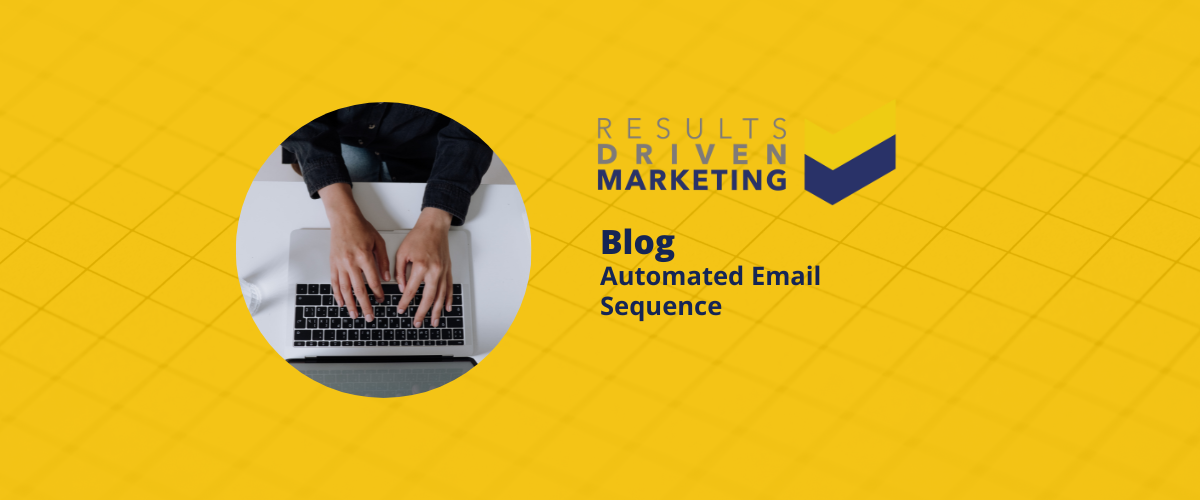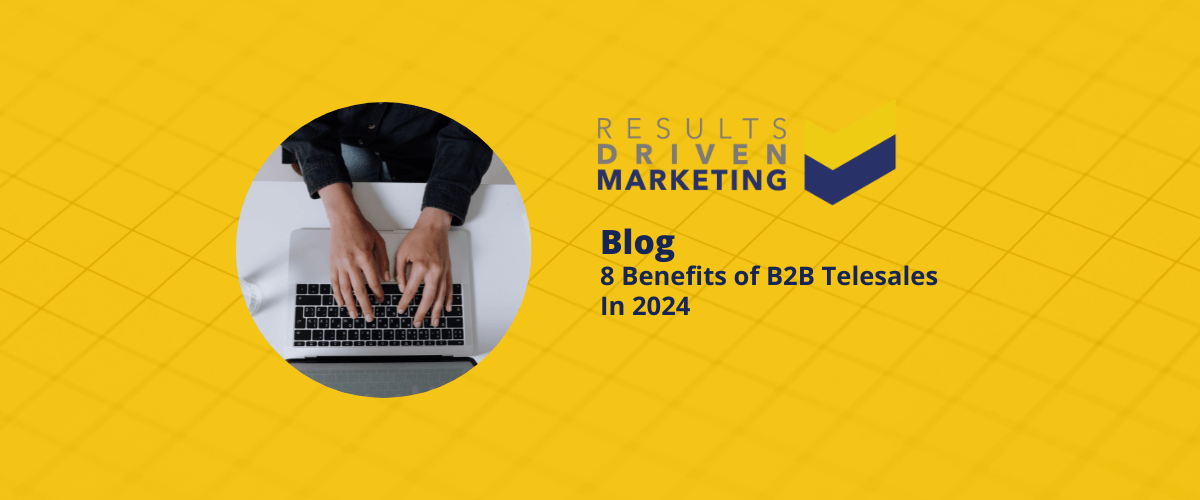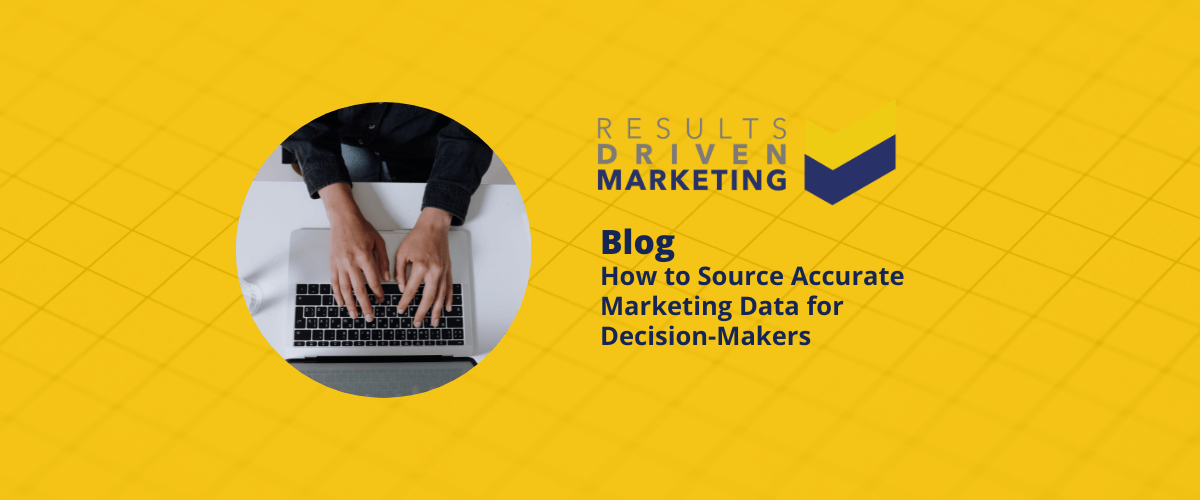
Automated Email Sequences
Automated email sequences are revolutionising the way businesses communicate with their audience, offering a blend of efficiency and personalisation that was once thought impossible. Mastering the art of automated email sequences can be a game-changer for businesses of all sizes. This article is set to unravel the secrets of successful automated email sequences, providing you with a comprehensive guide on how to effectively implement them in your marketing strategy.
In this deep dive, we will explore:
- The Basics of Automated Email Sequences: What they are, how they work, and why they’re an indispensable tool in modern marketing.
- Designing Your Automated Email Sequence: Step-by-step guidance on creating compelling and effective email sequences that resonate with your audience.
- Best Practices for Maximising Impact: Tips and tricks to ensure your automated emails stand out and achieve desired results, from crafting engaging content to optimising send times.
- Measuring Success: Understanding how to track and analyse the performance of your automated email sequences, ensuring continual improvement and maximum ROI.
By the end of this article, you’ll have a thorough understanding of how to harness the power of automated email sequences, transforming the way you engage with your customers and prospects.
Table of contents:
What is an Automated Email Sequence?
An email sequence, in its essence, is a series of emails automatically sent to specific segments of your audience, triggered by predefined conditions or actions. Think of it as a well-orchestrated symphony, where each note is a carefully crafted email, playing its part in the grander scheme of your marketing strategy.
These sequences are designed to guide potential customers through a journey, from the initial awareness stage right through to the final act of purchase and beyond.
Why Use Automated Email Sequences?
Now, you might wonder, “Why should I integrate automated email sequences into my marketing toolkit?” The answer lies in their unparalleled efficiency and effectiveness. Here’s why:
- Targeted Communication: Email sequences allow you to send personalised messages to different segments of your audience, ensuring that the right message reaches the right person at the right time.
- Time-Saving Automation: Once set up, these sequences run automatically, saving you a significant amount of time and effort.
- Consistent Engagement: They keep your audience engaged, nurturing leads and gently nudging them towards making a purchase.
- Measurable Results: With email sequences, tracking the success of your campaigns becomes a breeze, allowing for data-driven decision-making.
Types of Automated Email Sequences
Diving deeper into the world of automated email sequences, we encounter various types, each serving a unique purpose:
- Welcome Sequences: Greet new subscribers and introduce them to your brand.
- Onboarding Sequences: Guide new customers in using your product or service.
- Re-engagement Sequences: Rekindle interest among inactive subscribers.
- Sales Sequences: Drive conversions and sales.
- Follow-up Sequences: Maintain communication post-purchase or after an event.
How to Create an Automated Email Sequence
Crafting an effective email sequence might seem daunting, but fear not! Here’s a step-by-step approach to get you started:
- Define Your Goal: What do you want to achieve with your sequence?
- Segment Your Audience: Group your audience based on behaviour, preferences, or demographics.
- Craft Compelling Content: Write engaging and relevant emails that resonate with your audience.
- Set Triggers and Timing: Decide when and under what conditions each email will be sent.
- Test and Optimise: Continuously test different elements of your emails for better performance.
Automated Email Sequence Best Practices
To ensure your automated email sequences hit the mark, here are some best practices to keep in mind:
- Personalisation is Key: Tailor your emails to address the specific needs and interests of your audience.
- Keep It Relevant: Ensure that your content is always relevant and adds value to your recipients.
- Mind the Frequency: Avoid overwhelming your audience with too many emails.
- Monitor and Tweak: Regularly review the performance of your sequences and make adjustments as needed.
- Stay Compliant: Always adhere to email marketing regulations and best practices.
Automated Email Sequences
In the digital marketing universe, automated email sequences stand as a beacon of efficiency and personalisation. These sequences, a series of emails dispatched automatically based on specific triggers, are not just a trend; they are reshaping how businesses communicate with their audience.
What Are the Advantages of Using Automated Email Sequences?
The advantages of leveraging automated email sequences are numerous, making them an indispensable tool for marketers and businesses alike. Let’s delve into some of these benefits:
- Time Efficiency: One of the most significant advantages is the time-saving aspect. Once set up, these sequences operate on autopilot, freeing up valuable time for other marketing activities.
- Consistent Customer Engagement: Automated email sequences ensure that your communication with customers is consistent and timely, enhancing customer experience and brand loyalty.
- Personalisation at Scale: These sequences allow for personalisation on a large scale. By segmenting your audience and tailoring messages to each segment, you create a more engaging and relevant experience for your subscribers.
- Improved Conversion Rates: By delivering the right message at the right time, automated email sequences can significantly boost conversion rates.
- Enhanced Lead Nurturing: They play a crucial role in nurturing leads by providing them with valuable information at different stages of their journey.
What Are the Disadvantages of Using Automated Email Sequences?
While automated email sequences offer a plethora of benefits, there are some disadvantages to consider:
- Risk of Over-Automation: There’s a fine line between helpful automation and overdoing it. Over-automation can lead to impersonal and irrelevant content, which might turn off your audience.
- Initial Setup Time: Setting up effective automated email sequences can be time-consuming initially, as it requires careful planning, segmenting your audience, and crafting the right messages.
- Potential for Technical Issues: Like any technology-driven process, there’s always a risk of technical glitches, such as emails not being sent out due to software issues.
- Need for Continuous Optimisation: Automated doesn’t mean set-and-forget. These sequences need regular reviews and updates to ensure they remain effective and relevant.
Is Using an Automated Email Sequence a Good Idea?
Deciding whether to use automated email sequences boils down to understanding your business needs and marketing goals. If you’re looking to save time, personalise communication at scale, and nurture leads effectively, then automated email sequences are indeed a brilliant idea.
They offer a strategic way to enhance your marketing efforts, provided they are well-planned and continuously optimized. However, it’s crucial to balance automation with a human touch to maintain the authenticity and relevance of your communication.
Key Considerations When Using Automated Email Sequences
When diving into the world of automated email sequences, it’s not just about setting them up and watching the magic happen. There are key considerations to ensure they work effectively and align with your marketing goals. Here’s what you need to keep in mind:
- Audience Segmentation: Understand your audience and segment them accurately. This ensures that your automated email sequences are hitting the right inboxes with the right messages.
- Content Relevance: The content of your emails should be highly relevant and valuable to your audience. Irrelevant content can lead to unsubscribes and a tarnished brand image.
- Timing and Frequency: Getting the timing and frequency right is crucial. Bombarding subscribers with too many emails can be as detrimental as sending too few.
- Personalisation: Go beyond using the recipient’s name. Tailor your content based on their interests, behaviors, and past interactions with your brand.
- Testing and Optimisation: Regularly test different elements of your email sequences, such as subject lines, content, and call-to-actions, and optimize based on performance metrics.
Alternatives to Using Automated Email Sequences
While automated email sequences are a powerful tool, they might not always be the right fit for every business or situation. Here are some alternatives:
- Manual Email Campaigns: For more personalised and less frequent communications, manual email campaigns can be more appropriate.
- Social Media Engagement: Engaging with your audience through social media platforms can be an effective way to build relationships and brand loyalty.
- Direct Mail: In an increasingly digital world, direct mail can stand out and make a tangible impression on your customers.
- SMS Marketing: For immediate and concise communication, SMS marketing can be a highly effective alternative.
Automated Email Sequence Examples and Templates
To give you a clearer picture of how automated email sequences can be structured, let’s explore some examples and templates:
Welcome Email Sequence
A welcome email sequence is your first step in building a relationship with new subscribers. It typically includes:
- A warm welcome message.
- Introduction to your brand and what subscribers can expect.
- Encouragement to follow your social media channels.
- A special offer or lead magnet to engage them further.
Onboarding Email Sequence
The onboarding email sequence is crucial for new customers. It should:
- Thank them for their purchase.
- Provide detailed information about how to use the product or service.
- Offer support and resources for any questions or issues.
- Request feedback or a review after a certain period.
Lead Nurturing Email Sequence
This sequence is designed to move leads down the sales funnel:
- Provide valuable content related to their interests.
- Showcase case studies or success stories.
- Offer solutions to their problems.
- Include a call-to-action for a consultation or demo.
Re-engagement Email Sequence
Re-engage inactive subscribers with:
- A message acknowledging their absence.
- An update on what’s new with your brand.
- A special offer or incentive to re-engage.
- An option to update their email preferences or unsubscribe.
Abandoned Cart Email Sequence
Abandoned cart email sequences are like a gentle nudge to remind customers about what they’ve left behind. Here’s how to structure them:
- Initial Reminder: Send a friendly reminder about the items in their cart, ideally within a few hours of abandonment.
- Added Incentive: If they haven’t responded, follow up with a small discount or free shipping offer to sweeten the deal.
- Last Call: A final reminder that their cart will expire soon, urging them to complete the purchase.
Renewal Email Sequence
Renewal email sequences are crucial for subscription-based services. They should:
- Initial Renewal Reminder: Notify customers well in advance of their renewal date.
- Benefits Reinforcement: Highlight the benefits they’ve enjoyed and what they can expect in the upcoming period.
- Urgent Reminder: A final reminder as the renewal date approaches, emphasizing the urgency.
Post-Purchase Email Sequence
Post-purchase email sequences aim to enhance customer satisfaction and build loyalty:
- Thank You Email: Express gratitude for their purchase.
- Product Usage Tips: Provide helpful tips or links to resources for getting the most out of the purchase.
- Feedback Request: After they’ve had time to use the product, ask for feedback or a review.
Sales Email Templates
Sales email templates should be concise and compelling:
- Introduction Email: Introduce yourself and your offering.
- Value Proposition Email: Clearly state how your product or service can solve their problem.
- Case Study or Testimonial Email: Share success stories of how your product has helped others.
Follow-Up Email Templates
Follow-up emails are key in keeping the conversation going:
- Post-Meeting Email: Summarise what was discussed in a recent meeting and next steps.
- Check-In Email: A friendly check-in if you haven’t heard back in a while.
- Last Attempt Email: Politely state this is your last attempt to reach out and ask for a response.
Break-Up Email Templates
Sometimes, it’s necessary to send a break-up email:
- Initial Break-Up Email: Express that you haven’t heard back and you’re assuming they’re no longer interested.
- Final Goodbye Email: A final message to let them know you won’t be contacting them further, leaving the door open if they change their mind.
Response Templates for Prospects
When prospects respond, be ready with:
- Interest Acknowledgement Email: Thank them for their interest and provide additional information.
- Answering Queries Email: Respond to any specific questions they have asked.
- Scheduling a Meeting Email: Propose times for a call or meeting to discuss further.
Templates for Reviving Cold Prospects
Reviving cold prospects requires tact:
- Reintroduction Email: Remind them who you are and why you’re reaching out again.
- Value Update Email: Share any new developments or offerings that might interest them.
- Feedback Request Email: Ask for feedback on why they didn’t proceed previously.
Handling Objections Email Templates
Handling objections is crucial in sales:
- Objection Acknowledgement Email: Acknowledge their concerns and provide clear, concise information to counter them.
- Further Clarification Email: Offer more detailed explanations or case studies if needed.
- Final Attempt to Overcome Objection Email: Make a last attempt to address their concerns and secure the sale.
Upsell and Cross-Sell Email Templates
For upselling and cross-selling:
- Complementary Product Offer Email: Suggest products that complement their previous purchase.
- Exclusive Upgrade Offer Email: Offer an exclusive deal to upgrade their existing product or service.
- Special Bundle Offer Email: Propose a bundle of products at a special price.
Referral Request Email Templates
Encouraging referrals can expand your reach:
- Referral Program Introduction Email: Introduce your referral program and how it benefits them.
- Referral Request Email: Directly ask for referrals, providing a simple way for them to do so.
- Referral Program Reminder Email: Remind them of the referral program and its benefits periodically.
Handling Objections Email Templates
When it comes to handling objections in automated email sequences, it’s all about addressing concerns with clarity and confidence. Here’s how you can structure these templates:
- Acknowledgment Email: Start by acknowledging their concerns. Show that you understand and respect their viewpoint.
- Solution-Oriented Email: Offer clear, concise information or solutions to counter their objections.
- Final Clarification Email: If objections persist, provide detailed explanations or examples to alleviate their concerns.
Upsell and Cross-Sell Email Templates
Upselling and cross-selling are art forms in the realm of email marketing. Your templates should:
- Complementary Product Suggestion: Suggest products or services that complement their initial purchase.
- Exclusive Upgrade Offer: Entice them with an exclusive deal to upgrade their existing product or service.
- Bundle Deal Email: Propose a special price for a bundle of products or services that offer additional value.
Referral Request Email Templates
Referrals can be a goldmine for new leads. Your referral request emails should:
- Introduce Referral Program: Clearly explain the benefits of your referral program.
- Direct Referral Request: Politely ask for referrals, providing an easy and straightforward way for them to refer others.
- Referral Program Reminder: Periodically remind them of the program and its benefits to keep it top of mind.
Customer Thank You Email Templates
A simple thank you can go a long way in building customer loyalty. You thank you emails should:
- Immediate Thank You: Send a heartfelt thank you immediately after a purchase or interaction.
- Milestone Thank You: Acknowledge and thank customers on special occasions or milestones.
- Annual Thank You: Once a year, send a thank you email expressing gratitude for their continued support.
Apology Email Templates
When things go wrong, apology emails help in damage control. They should:
- Immediate Apology: Quickly acknowledge the mistake and apologize sincerely.
- Explanation Email: Offer an explanation of what went wrong and what is being done to rectify it.
- Compensation Offer: If appropriate, offer some form of compensation or gesture to make amends.
Feedback Collection Email Templates
Feedback is crucial for improvement. Your feedback collection emails might include:
- Initial Feedback Request: Politely ask for feedback on a recent purchase or interaction.
- Follow-Up Feedback Request: If you haven’t received feedback, send a gentle reminder.
- Feedback Thank You Email: Always thank customers for providing feedback, regardless of its nature.
Staying in Touch Email Templates
Staying in touch emails help keep your brand top of mind. They can include:
- Regular Update Email: Share regular updates about your company, products, or services.
- Holiday Greetings Email: Send greetings during holidays or special occasions.
- Personal Milestone Email: Acknowledge personal milestones like birthdays or anniversaries.
Networking Follow-Up Email Templates
After networking events, follow-up emails are key. They should:
- Post-Event Follow-Up: Send a personalized email after meeting someone at an event.
- Offer of Value Email: Provide something of value, like a helpful article or introduction.
- Invitation to Connect Further: Invite them to connect on social media or for a coffee chat.
Sales Scenario Specific Email Templates
For specific sales scenarios, your emails need to be tailored accordingly:
- After a Demo Email: Follow up with additional information and next steps after a product demo.
- Post-Consultation Email: Summarize the consultation and propose a plan of action.
- Pre-Launch Email: Build excitement and anticipation before the launch of a new product or service.
Cold Prospecting Email Templates
Cold prospecting emails should be engaging and to the point:
- Introduction Email: Introduce yourself and your company briefly and compellingly.
- Value Proposition Email: Clearly state how your product or service can benefit them.
- Call to Action Email: Encourage them to take a specific action, like scheduling a call.
Job Seeker Email Templates
For job seekers, emails can open doors:
- Application Follow-Up Email: Follow up after submitting a job application.
- Post-Interview Thank You Email: Thank the interviewer and reiterate your interest in the position.
- Status Inquiry Email: Inquire about the status of your application if you haven’t heard back.
Customer Success Manager Email Templates
Customer Success Managers play a crucial role in client satisfaction. Their emails might include:
- Welcome Email: Welcome clients and provide essential contact information.
- Check-In Email: Regularly check in to ensure client satisfaction and address any issues.
- Resource Sharing Email: Share useful resources or tips relevant to their business or industry.
Account Manager Email Templates
For account managers, communication is key. Your email templates should:
- Client Onboarding Email: Welcome new clients and outline what they can expect.
- Regular Update Email: Keep clients informed about project progress and any relevant updates.
- Feedback Request Email: Regularly ask for feedback to ensure client satisfaction and address any concerns.
Recruiter Email Templates
Recruiters need to communicate effectively with both candidates and hiring managers:
- Candidate Outreach Email: Reach out to potential candidates with a compelling introduction to the role.
- Interview Scheduling Email: Coordinate interview times with candidates in a clear and polite manner.
- Application Status Update Email: Keep candidates informed about their application status throughout the process.
Marketer Email Templates
Marketers rely heavily on email for outreach and engagement:
- Campaign Announcement Email: Announce new marketing campaigns or initiatives.
- Newsletter Email: Regular newsletters to keep your audience engaged and informed.
- Event Invitation Email: Invite subscribers to webinars, workshops, or other events.
Sales Manager Email Templates
Sales managers need to motivate and inform their teams:
- Sales Target Email: Communicate sales targets and objectives.
- Performance Feedback Email: Provide feedback on sales performance and areas for improvement.
- Team Meeting Email: Schedule and agenda for upcoming sales team meetings.
Entrepreneur Email Templates
Entrepreneurs wear many hats, and their emails reflect this:
- Business Introduction Email: Introduce your business to potential clients or partners.
- Partnership Proposal Email: Propose collaborations or partnerships with other businesses.
- Investor Update Email: Keep investors informed about business progress and milestones.
Support Rep Email Templates
Support reps are the frontline of customer service:
- Issue Acknowledgment Email: Acknowledge customer issues and assure them of a resolution.
- Solution Email: Provide solutions or workarounds to customer problems.
- Follow-Up Email: Follow up to ensure the issue was resolved and the customer is satisfied.
PR Professional Email Templates
PR professionals need to communicate effectively with media and stakeholders:
- Press Release Email: Send out press releases to media contacts.
- Event Invitation Email: Invite media and stakeholders to events or launches.
- Crisis Communication Email: Communicate during a crisis to manage public perception.
Sales Development Rep Email Templates
SDRs focus on generating leads and setting appointments:
- Lead Generation Email: Reach out to potential leads with a compelling message.
- Appointment Setting Email: Coordinate times for sales calls or meetings.
- Follow-Up Email: Follow up with leads post-meeting to keep the conversation going.
Customer Service Rep Email Templates
Customer service reps need to be empathetic and efficient:
- Service Inquiry Response Email: Respond to customer inquiries promptly and helpfully.
- Service Issue Resolution Email: Inform customers about the resolution of their service issues.
- Customer Satisfaction Survey Email: Send out surveys to gather feedback on customer service.
Executive Email Templates
Executives need to communicate clearly and effectively:
- Company Update Email: Update employees or stakeholders on company news and developments.
- Policy Change Email: Inform about changes in company policies or procedures.
- Executive Announcement Email: Announce new initiatives, changes in leadership, or other significant news.
Sales Operations Email Templates
Sales operations focus on the efficiency and effectiveness of a sales team:
- Sales Process Update Email: Inform the team about changes or updates in the sales process.
- Sales Data Report Email: Share sales data and analytics with the team.
- Sales Tool Introduction Email: Introduce new sales tools or software to the team.
Automated Email Sequence FAQ
What is the Difference Between Drip Sequence and Email Sequence?
A drip sequence is a subset of email sequences, typically automated and triggered based on specific actions or time intervals. In contrast, an email sequence can be broader and include both automated and manually sent emails.
How Can I Write the Best Email Sequences?
To write the best email sequences, focus on personalisation, clear and compelling content, timely delivery, and continuous optimization based on feedback and analytics.
What Are the Important Metrics Used to Track My Email Sequence?
Key metrics include open rates, click-through rates, conversion rates, unsubscribe rates, and engagement over time.
How to Ensure Email Sequences are Mobile-Friendly?
To ensure mobile-friendliness, use responsive email design, keep content concise, use large and clickable call-to-action buttons, and test your emails on various devices.
What Are the Best Practices for Crafting Sales Emails?
Best practices include understanding your audience, personalizsng your message, creating a compelling subject line, providing clear value propositions, and including a strong call-to-action.
How to Effectively Use Email Templates in Different Sales Scenarios?
Match the template to the scenario, personalise the content, keep the message clear and concise, and ensure a call-to-action aligns with the specific sales scenario.
What Are Some Creative Approaches to Abandoned Cart Emails?
Include product images left in the cart, offer a limited-time discount, provide social proof like reviews, and create a sense of urgency.
How to Re-engage Customers Through Email Sequences?
Use personalised content, special offers or discounts, updates about new products or features, and ask for feedback to understand their needs better.
What Strategies Work Best for Renewal Email Sequences?
Start communicating well before the renewal date, highlight the value and benefits of renewing, offer incentives for early renewal, and make the renewal process as easy as possible.
How to Tailor Email Sequences Based on Customer Actions?
Use customer data to segment your audience, create different sequences for different actions (like purchase, cart abandonment, or website visit), and personalize the content based on their behavior.
What Are the Best Ways to Collect Feedback Through Email?
Use short and engaging surveys, offer incentives for completing surveys, ask specific questions, and make it easy for recipients to provide feedback.
How to Use Email Sequences for Event Promotion and Follow-Up?
For event promotion, create a sense of urgency, provide all necessary details, and use testimonials or past success stories. For follow-up, thank attendees, provide additional resources, and offer a call-to-action for the next steps.
What Are the Techniques for Writing Effective Onboarding Emails?
Focus on welcoming and educating new users, provide clear and actionable steps, use a friendly and encouraging tone, and offer resources for additional help or learning.
Who are we?
Dedicated to lead generation, Results Driven Marketing provides myriad services SMEs can trust to deliver results.
Our marketing lists are guaranteed accurate to industry high standards, and GDPR compliant and our experience team means that if you are looking to buy data, they make them totally bespoke and highly relevant whether you are looking for email lists, direct mailing lists or telemarketing lists.
Our email marketing software is highly rated. Responder provides the automation tools you need to put your marketing on autopilot.
We also supply email marketing solutions with our email marketing platform.
Call us today on 0191 406 6399 to discuss your specific needs.
Results Driven Marketing
info@rdmarketing.co.uk
0191 406 6399





